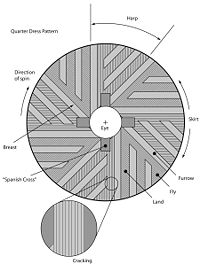
Photo from wikipedia
Gears are among the most crucial components in the transmission systems of machine tools. Gear manufacturing includes a number of processing procedures. The grinding process is an important procedure involving… Click to show full abstract
Gears are among the most crucial components in the transmission systems of machine tools. Gear manufacturing includes a number of processing procedures. The grinding process is an important procedure involving high precision and fairly small grinding surfaces. For this reason, this study aimed at developing a quality assessment model for the internal cylindrical grinding process of gears. The Six Sigma quality indices (SSQIs) were used to directly assess the quality of the internal cylindrical grinding process due to their ability to directly reflect quality level and process yield. Since the process may include nominal-the-best (NTB), larger-the-better (LTB) and smaller-the-better (STB) quality characteristics, so we used the variable transformation method to normalise the specifications of each quality characteristic for the convenient and effective management and analysis of process performance for multiple quality characteristics. We then constructed a multi-characteristic process quality analysis chart (MPQAC) to simultaneously assess the quality levels of various quality characteristics. Furthermore, the MPQAC can provide references for process improvement. This ensures the quality of internal cylindrical grinding and enhances the quality of gear and machine tool products. Finally, a real-world application and numerical experiments demonstrate the effectiveness and practical applicability of the proposed method.
Journal Title: International Journal of Production Research
Year Published: 2019
Link to full text (if available)
Share on Social Media: Sign Up to like & get
recommendations!